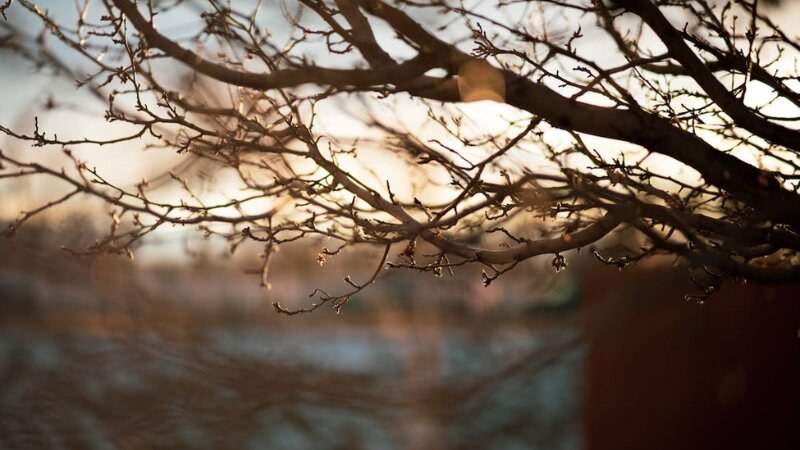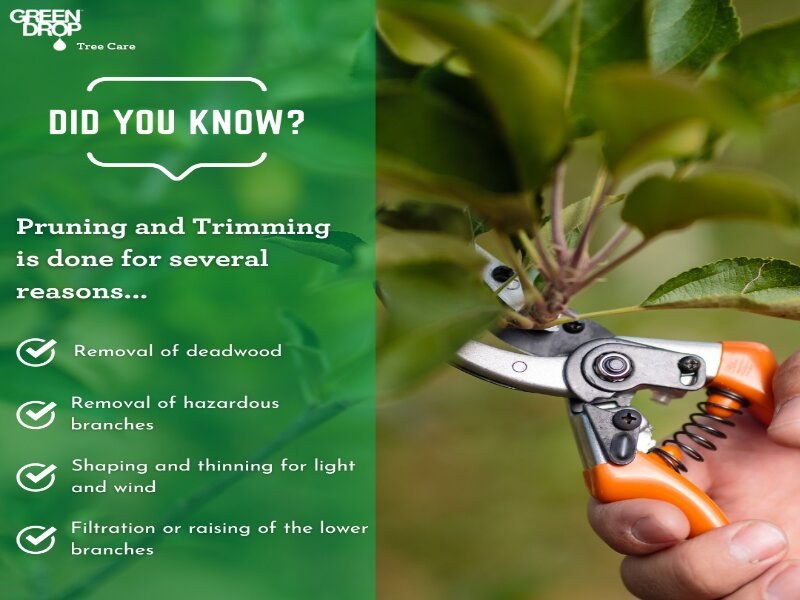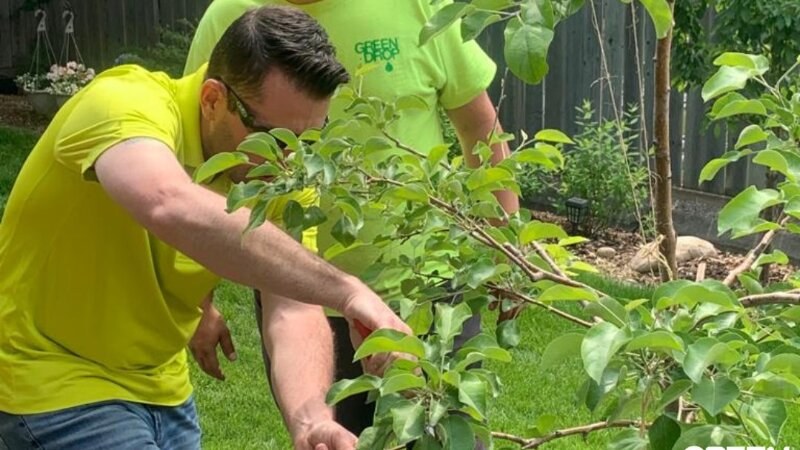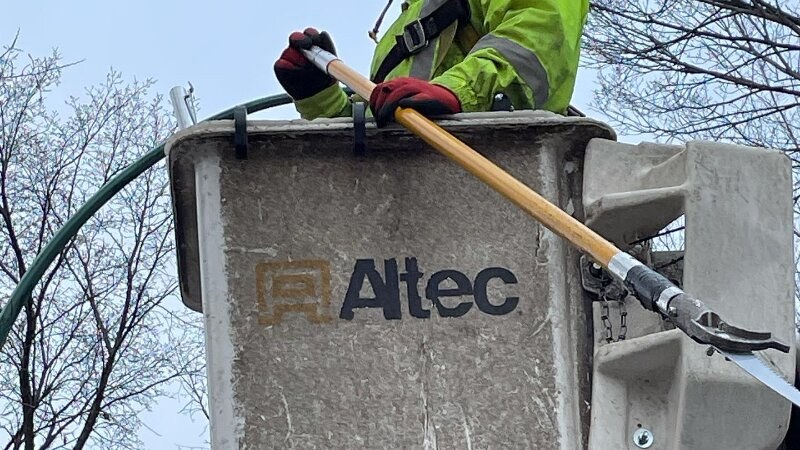Can I Prune Trees in the Winter?
Reading time: 6 minutesIn most cases, yard work and landscaping take a hiatus during the winter, but this isn’t true for tree care. Cold weather causes trees to become dormant, meaning they essentially take a "break" until the weather warms back up in the spring. This is an excellent time for pruning. Here’s why and where you can learn more about winter tree maintenance.

Top Benefits of Winter Tree Pruning
Pruning your trees is usually easier when dead branches and leaves have fallen off at the end of fall, and you can see the tree’s overall structure more clearly. This is called dormant pruning. Other benefits of winter tree pruning include:
Less Stress on Your Trees
Even though pruning is critical for tree health, it's still stressful on the tree and requires a period of healing. Mitigating the stress of pruning is important since this affects how quickly a tree bounces back after trimming.
Since trees redirect their energy to root growth during the winter, branch growth slows down or completely stops. When branches are trimmed at this time, the tree doesn’t “notice” the stress as much.
This allows you to get rid of sick, dead, or overgrown branches without shocking the tree like you might if you were to do the same during the spring or summer. During these seasons, branches and leaves are actively growing, and cutting them is much more stressful for the tree overall.
Limited Exposure to Harmful Pests and Diseases
One unfortunate aspect of pruning is that it creates openings in a tree's bark, which makes it more susceptible to insects, bacteria, and fungal infections. But because pests and diseases are much less active—or even non-existent—in the winter, the risk of this problem is inherently much lower this time of year.
Prevents Premature Growth of New Shoots
Pruning naturally stimulates new branch growth near the cut. Young branches will likely be killed off during the upcoming winter season if this happens in the fall. Not only does this put extra stress on the tree during an already challenging time, but it can also affect the rate at which the tree recovers during the spring.
Waiting to prune during the winter is ideal since the colder temperatures will discourage new shoots from growing in the first place.
Prevents the Slowing of Trunk Growth
While pruning may signal the tree to make more branches where it was wounded in an effort to heal itself, this doesn't necessarily speed up the tree's overall growth.
Pruning limbs closest to the trunk is more likely to actually slow the growth rate as the tree senses damage and begins to conserve its energy. Trimming your tree during its dormancy period decreases this response and keeps it limited to the period during which trees already naturally limit their growth.
Decreases the Risk of Falling Branches
Western Canada’s winters are usually accompanied by a lot of snow and ice, especially in northern regions like Edmonton. Trimming dead, decaying, or damaged branches during the early part of winter can lower the risk of branches breaking and falling under the physical weight of a winter storm. Ideally, pruning should take place between the time the tree goes dormant and before winter is well underway.
Speeds Up the Rate of Healing
Trees almost “hibernate” in the winter, storing their energy for a vibrant spring return. When you prune during this time, you can tap into those extra energy reserves and use them to your advantage. Pruning wounds and cuts in a tree’s bark tend to heal much faster in the winter versus other seasons, which helps protect its vulnerable interior from damage.
Encourages Spring Growth
Trees that have been properly pruned at the beginning of winter are free of diseased or decaying branches and ready for vibrant spring growth. You can expect thicker, fuller leaves, healthier twig growth, and more resilience to drought, pests, and other warm-weather problems.

How to Prune Your Trees in the Winter
If you’re pruning a tree yourself, here are some basic instructions to follow.
- Get your supplies together. Make sure you have gloves, loppers or shears, a handsaw, safety glasses, a ladder, and someone to help you keep the ladder steady while you work.
- Sanitize your tools. Even though the risk of disease is low when pruning during the winter, any equipment or tools you use to cut or handle the tree should be sanitized beforehand.
- Take a photo of your tree first. Then, mark which branches you want to remove and where you want the cut to be placed. Tie a cord or strip of fabric around where the branch should be trimmed, and take a step back to double-check that you’re not removing too much before you get started.
- Prune small branches first. Ideally, start with thin, short, and spindly branches and get those out of the way before you cut large branches.
- Cut branches that are long or thick in sections. Instead of cutting them at the branch's base, start by cutting off the outermost section. Then, remove the middle section before trimming the widest part near the trunk.

When to Call a Professional Arborist
In some cases, DIY may not be your best option to get the job done. You may need professional tree pruning services to ensure your safety or the health and vitality of your trees.
Some signs that you may need the help of an experienced tree service technician include:
- Some of your tree branches are touching power lines. Never prune a tree that has grown into or is entangled with a power line. It’s best to leave these jobs to a tree removal company that has the proper equipment, tools, and training to trim your tree safely.
- Your tree has exposed roots. This often means your tree is unstable since trees have much shallower root systems than they appear to. Improper cutting can cause a tree to become heavier on one side, potentially uprooting it from the soil and creating a serious fall hazard.
- Tree branches are sitting on your roof. If you have tree branches touching the roof or windows of your home, removing them can cause injury or damage to property if done incorrectly or without the right tools. A professional can skilfully trim away dead or dying branches that could break off without breaking windows or scraping at shingles in the process.
- The tree has visible signs of decay. If you can see that a tree is dead or decaying on the outside, chances are, the inside is much worse. These trees are less likely to be stable and may fall during pruning.

Learn More from Green Drop’s Certified Tree Arborists
Pruning your trees is an important part of maintaining them, but over-pruning can cause trees to become stunted. This puts them at risk of pest infestation and disease. That’s why working with a qualified tree service specialist—an ISA-certified arborist—is important to help your foliage look great all year long.
Our tree pruning services are now available for Calgary, Edmonton, Red Deer, Regina, Saskatoon, and Winnipeg residents.

